|
HOME
LOGO
MISSION
RESEARCH
LINKS
NEWS
TOOLS
LETTERS
DOWNLOADS
ARCHIVE
CALL FOR PAPERS
FREE SUBSCRIPTION
SELECTED
EDUCATION
RESOURCES
FOR
SUSTAINABLE
DEVELOPMENT
(click on the
images for
more info)

EARTH
CHARTER

EARTH
CHARTER
ESD

MILLENNIUM
DEVELOPMENT
GOALS

MAP OF
HUMAN
KNOWLEDGE

INTERNET ARCHIVE

WIKIPEDIA

UNITED NATIONS

UNESCO ESD

UNESCO ESD
GOOD PRACTICES


UNU IAS ESD

UNU GEIC ESD

GENDER
EQUALITY

TWO WINGS
OF A BIRD

SIENA
VIRTUAL
COLLEGE

UNICEF's
PHOTOS OF
THE YEAR

SOCIO-
ECONOMIC
DEMOCRACY

GLOBAL
CITIZENSHIP

MEDIA
GLOBAL

GLOBAL
FOOTPRINT

WORLD
ENV ORG

BIBLE
GATEWAY

QURAN
GATEWAY

SEXUAL
VIOLENCE
RESEARCH

BIODIVERSITY RESEARCH

ECOLOGICAL
INTERNET

FACING THE
FUTURE
EDUCATION
RESOURCES

WEBQUEST
EDUCATION
RESOURCES

EARTH INSTITUTE

ESD TOOLKIT

GEOGRAPHY
OF HUNGER

DIVINE
COMMUNION

WORLD
COUNCIL OF
CHRISTIAN
CHURCHES

ISLAM

JUDAISM

BAHÁ'Í

GIRARDIAN
BIBLICAL
REFLECTIONS

RELIGIOUS TOLERANCE

BCCA IEF ESD

IISD ESD

GDAE ESD

INTUTE

WCESD
APRIL 2009

UNDP
HUMAN DEVELOPMENT

UNDP
HDR 2009

WORLD BANK

GCAP

ISER

IFPRI

DEV ORGS

IICD

OECD

ELDIS

GSDRC

PEP NET

DEMOGRAPHIC
RESEARCH

WORLD
GOVERNMENTS

WORLD
UNIVERSITIES

GLOBAL
NONKILLING

WORLD
NEWSPAPERS

PLANET 2025

SHAPING
TOMORROW

WORLD
FUTURES

LITTLE EARTH SHOW

PAINT
FOR THE
PLANET

UNION OF
CONCERNED
SCIENTISTS

NEW
CIVILIZATION
NETWORK

DAMIETTA
PEACE
INITIATIVE

SLUM DWELLERS
INTERNATIONAL

INTEGRAL
ECOLOGY
CENTER

MICAH CHALLENGE

GRIST MAGAZINE

PUBLIC POLICY RESEARCH

LEARNING FOR A SUSTAINABLE LIVING

PLANET GREEN

GLOBAL
GOVERNANCE

LONDON SCHOOL OF ECONOMICS

INTEGRAL
INSTITUTE

DEVELOPMENT
CROSSING

WORLD DIGITAL LIBRARY

OXFORD
OPHI

USP ESD

UNFCCC
CLIMATE CONF
COPENHAGEN
DECEMBER 2009

LANGUAGE
OF THE HEART
|
|
Education for Sustainable Development - Part 4
SUMMARY
|
This issue is Part 4 of the series on Education for Sustainable Development (ESD). It provides a report on Versions 0, 1, and 1.5 of the ESD consultation and the preparation of Version 1.6. Thus far the responses have been as follows:
- As of 24 April 2009, 61 persons had taken the V0 test survey.
- As of 27 May 2009, 129 persons had taken the V1 test survey.
- As of 27 June 2009, 263 persons had taken the V1.5 test survey.
The "lessons learned" in V1.5 are as follows:
About the relevance of the UNESCO ESD themes:
- V1.5, like V0 & V1, yields high relevance rankings for the eight UNESCO "key action themes."
About the scope of the UNESCO ESD themes:
- The mutual reinforcement of secular and religious patriarchies is what fuels the resistance to gender equality/equity.
- The worldwide recognition of health care as a human right is a prerequisite for the reformation of health care systems.
- The "sustainable development paradox" is a core issue to be studied and discussed in ESD.
- What really matters is how to feed humanity without harming (pesticides, other chemicals) humanity and/or the human habitat.
- Cultural diversity is beneficial to sustainable development as long as it is not offensive to local cultural and religious practices.
- Peace and justice are both necessary and sufficient for sustainable development. In matters of peace and justice, there must be checks and balances between social and religious institutions.
- The main ESD issue is how to make cities less dependent on external supply chains and more self-sufficient in terms of basic necessities.
- Moderating material consumption is a prerequisite to further human development in all dimensions -- physical, intellectual, psychological, spiritual.
About the ESD survey design and questionnaire:
- The survey needs further improvement for brevity, bias minimization, and coverage maximization.
The survey instrument has been carefully revised in response to feedback received in V0, V1, and V1.5. Version 1.6 is a revised and abbreviated version of Version 1.5, and still considered a test version. It would be great if those who participated in the previous tests can also participate in the V1.6 test. In addition, it is hoped that many more subscribers will participate in the Version 1.6 test. There are only 16 questions (2 for each of the 8 UNESCO categories) and it takes about one half hour. These are the links for Version 1.6:
The questionnaire design is stabilizing. The design evolution thus far has been as follows:
- Version 0 - based on Paulo Freire's educational philosophy (iterative questions and answers pursuant to "learning by doing").
- Version 1 - further structuring based on Ken Wilber's integral theory (the AQAL model - All Quadrants, All Levels) in order to minimize "elitist" bias and maximize coverage of all relevant issues in ESD. Mostly multiple choice questions requiring selection of the "best answer."
- Version 1.5 - same structure as Version 1, with most questions reconstructed as "select all that apply" and each question followed by a box for participants to enter an alternative issue.
- Version 1.6 - same structure as Version 1.5, but only 2 questions for each UNESCO ESD theme, and each question edited for nonviolence (to reduce bias) in accordance with the mimetic theory of René Girard.
In brief, this issue includes the following:
In page 1, an update on the ESD consultation project, including:
- In section 1, a progress report on the ESD project.
- In section 2, a digest of the V0 test and results.
- In section 3, a digest of the V1 test and results.
- In section 4, a report on the V1.5 test and results.
- In section 5, a combined assessment of V0, V1, and V1.5.
- In section 6, a description of test survey version 1.6.
- In section 7, a description of the survey evolutionary process.
- In section 8, links to online documentation for each test iteration.
- In section 9, some suggestions for prayer, study, and action.
In page 2, a paper on the spirituality of nonviolence based on the philosophy of René Girard:
Living by the Breath of God:
A spirituality of God’s Desire, by Andrew Marr, OSB, St. Gregory's Abbey, Three Rivers, Michigan, USA.
This paper was presented at the Theology and Peace Conference,
Chicago, 26-28 May 2009, and is reprinted with permission.
In page 3, a paper on the statistical analysis of the role of adult education in fostering sustainable development:
Determining the Role of Adult Education in the Process for Building the Culture of Sustainable Development, by Pauline A. McLean, Ph.D., Department of Educational Leadership, Florida Atlantic University, Boca Raton, Florida, USA. This paper is based on the author's Ph.D. dissertation, An assessment of the effect of adult education on sustainable development in Jamaica, Florida Atlantic University, Boca Raton, Florida, USA, dated 30 April 2009.
|
| |
|
TABLE OF CONTENTS & NAVIGATION LINKS
INVITED PAPERS
Living by the Breath of God: A spirituality of God’s Desire,
by Andrew Marr, OSB,
St. Gregory's Abbey, Three Rivers, Michigan, USA.
Given at the Theology and Peace Conference, Chicago, 26-28 May 2009.
Reprinted with Permission
Determining the Role of Adult Education in the Process for
Building the Culture of Sustainable Development,
by Pauline A. McLean, Ph.D.,
Department of Educational Leadership,
Florida Atlantic University, Boca Raton, Florida, USA.
|
| |
1. Progress Report on the ESD Project
The Education for Sustainable Development (ESD) research project is an independent initiative of the PelicanWeb pursuant to a better understanding of the issues that should be discussed in preparing people for leadership roles in sustainable development. The project entails developing and deploying a survey instrument to isolate the issues in a way that supports planning and resource development for ESD. The survey is structured around the "key action themes" proposed by UNESCO for the "Decade of Education for Sustainable Development" (2005-2014). The following "key action themes" are covered:
This is a long term project, but some progress is being made:
The design of the survey is stabilizing, and is based on the following:
- The eight UNESCO "key action themes" as defined above.
- The recursive "questions & answers" educational method of Paulo Freire.
- The "integral theory" and AQAL ("all quadrants, all levels") model of Ken Wilber.
- Starting with test version 1.6 (see section 6 of this issue) the "mimetic theory" of René Girard serves as a guide for reducing bias in the formulation of questions.
The following testing and analysis has been done:
- Test survey version 0 (40 questions, 61 responses) based on the UNESCO themes and Freire's method
- Test survey version 1 (40 questions, 129 responses) based on the UNESCO themes, Freire's method, and Wilber's quadrants
- Test survey version 1.5 (40 questions, XXX responses), same design but mixing ranking, multiple choice, and open questions
- Analysis reports for versions 0, 1, and 1.5 are given in sections 2, 3, and 4 of this issue.
- A combined assessment of versions 0, 1, and 1.5 is provided in section 5 of this issue.
- Test survey version 1.6 (16 questions, responses TBD) is described in section 6 of this issue.
The long term goal of developing a survey on ESD requirements that is universally (globally) applicable but tailorable to local geographies and cultures is still beyond the horizon.
In Version 1.6, the 5 questions for each UNESCO theme have been collapsed to two: a ranking question on the relevance of the UNESCO themes, and a multiple choice question with four options each (corresponding to the four AQAL quadrants) plus an "other" option to be entered by the participants who so desire. René Girard's "mimetic theory" of violence/nonviolence is used to improve neutrality in the formulation of each question. This yields a very concise and elegant test that retains the same design and hopefully should take care of the clamor for brevity. Hopefully, this test will determine whether or not consolidating the questions reduces bias without compromising coverage. It is anticipated that achieving the optimal mix of neutrality, coverage, and brevity will require additional testing iterations. The survey instrument must be allowed to mature before deployment to a wider audience.
2. Summary of ESD Test Survey V0
Full documentation of the ESD Test Survey V0 is available online:
The following is a summary of "lessons tentatively learned" in Version 0:
Confirmation that sustainable development is the only feasible way forward for humanity
Confirmation that education for sustainable development is the most urgent priority
Confirmation that the each of the UNESCO areas for ESD is highly relevant
Confirmation that sustainable development is more than just a matter of balancing material resource flows
Confirmation that sustainable ***human development*** is the core of sustainable development
Finding that ESD is rarely perceived to require a shift from traditional education to "learn by doing"
Finding that SD is mostly perceived as a collective problem beyond the reach of individual initiatives
Feedback to the effect that the survey questionnaire is too long and takes over an hour to complete
Feedback to the effect that the language of the survey questionnaire needs careful editing to minimize bias
Feedback to the effect that the survey questionnaire needs improvement to maximize coverage of all issues
The term "lessons tentatively learned" is used to emphasize that lessons "learned" in one test may be "unlearned" in subsequent tests, and there is no presumption of validity (let alone statistical inference at a given significance level) in these early results. It is hoped that the survey will mature and eventually can be deployed according to some sampling design that supports statistical inference. At this point, we are simply "testing the waters."
3. Summary of ESD Test Survey V1
Full documentation of the ESD Test Survey V1 is available online:
The following is a summary of "lessons tentatively learned" in Version 1:
Both V0 and V1 yield high rankings for the eight UNESCO categories.
Most responses are in favor of overcoming patriarchy in secular institutions, and many are also in favor of overcoming patriarchy in religious institutions.
The dominant reason for people not to take good care of their own health is poverty (lack of access, lack of affordability).
There is a remarkable consensus on the need to overcome addictive consumerism and refocus on improving social and environmental justice.
The high percentage of participants in favor of "checks and balances" may be indicative a wider understanding of the principle of subsidiarity.
Not surprisingly, most responders are in favor of cultural diversity. But there seems to be a reluctance to openly make choices pursuant to overcoming gender discrimination.
It is now commonplace (at least in democracies) to discuss secular abuses of power; but discussing abuses of religious power (including gender violence) is still taboo in many cultures and institutions.
Most people now live in cities and therefore have a vested interest in cities becoming sustainable. But very few people are ready to tolerate pigs and chickens running around in the neighborhood.
The high percentages in favor of embracing a simpler lifestyle and moderating their own consumption habits are very encouraging. But it is hard to envision these changes propagating without massive social and cultural support.
The revision of the V0 questionnaire for the V1 iteration was described in Section 7 of the May 2009 issue. Basically, the V0 to V1 revision entailed restructuring the last four questions under each UNESCO theme as "multiple choice" questions to cover the four quadrants of the Wilber's AQAL model.
4. Analysis of ESD Test Survey V1.5
Full documentation of the ESD Test Survey V1.5 is available online:
Analysis of Relevance Rankings
Using the 9 to 1 relevance scale, where 9 is critical and 1 is irrelevant, the following are the average V1.5 relevance rankings for the eight UNESCO themes:
- [Question 1] Average relevance of gender equity: 7.63
- [Question 6] Average relevance of health care: 8.09
- [Question 11] Average relevance of environmental stewardship: 8.49
- [Question 16] Average relevance of rural development: 7.51
- [Question 21] Average relevance of cultural diversity: 7.58
- [Question 26] Average relevance of human security: 8.38
- [Question 31] Average relevance of sustainable urbanization: 7.00
- [Question 36] Average relevance of sustainable consumption: 8.24
The V1.5 responses, like those for V0 and V1, yield high relevance rankings for the eight UNESCO themes. But these are simply the arithmetic average of the rank selections by the 263 participants. As is well known, statistical distributions may have the same arithmetic average and differ significantly with regard to spread and shape of variation. So it is desirable to check how the 263 relevance rankings are distributed by rank and UNESCO ESD theme. Below is a tabulation of the data for all themes and rankings:
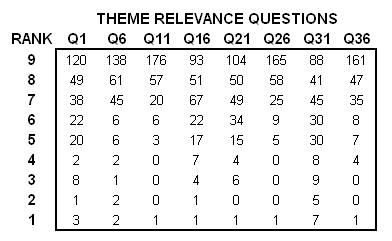 Table 1. Relevance Counts by Rank and Theme
Table 1. Relevance Counts by Rank and Theme
|
The numbers in the table are the counts of participants selecting each theme-rank combination.
The relevance scale is from 1 to 9, where 1 is irrelevant and 9 is critical. There are eight relevance ranking questions:
Q1 about gender equality, Q6 about human health, Q11 about environmental stewardship, Q16 about rural development,
Q21 about cultural diversity, Q26 about human security, Q31 about sustainable urbanization, and Q36 about sustainable consumption.
|
Figure 1 shows relevance ranking distributions for each 1 to 9 rank:
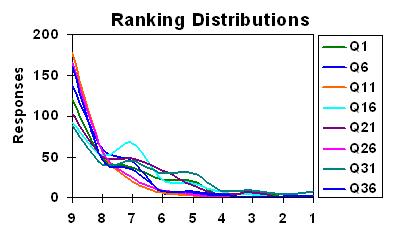 Figure 1. Relevance Ranking Distributions by Rank
Figure 1. Relevance Ranking Distributions by Rank
|
The vertical axis is the number of participants selecting each 1-9 rank for each theme. The horizontal axis is the nine rankings in the 1-9 scale. Each curve shows the distribution of rankings for each of the themes listed in the legend. All the distributions follow the same pattern of exponential decay, with most selections in the 9 to 7 range, some selections in the 6 to 4 range, and very few selections in the 3 to 1 range.
|
Figure 2 shows relevance ranking distributions for each question/theme:
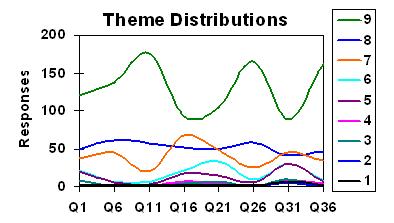 Figure 2. Relevance Ranking Distributions by Theme
Figure 2. Relevance Ranking Distributions by Theme
|
The vertical axis is the number of participants selecting each 1-9 rank for each theme. The horizontal axis is the eight questions, one for each of the eight UNESCO ESD themes. Each curve shows the theme-to-theme variability of in the selected rankings. Most of the selected rakings for all themes are in the 9 to 7 range, i.e., critical or highly important. But the green curve (rank 9 selections) shows significant variability, with three peaks correponding to Q11 (environmental stewardship), Q26 (human security), and Q36 (sustainable consumption). The blue curve (rank 8 selections) is practically constant at 50 selections for all themes. The orange curve (rank 7 selections) also has peaks and valleys, with the peaks corresponding to the green curve valleys and vice versa.
|
Figures 1 and 2 show that over 200 of the participants ranked all the ESD themes 7 or higher. Over 100 of the participants ranked all the ESD themes as critical (9). Figure 2 may be indicative of the participants having difficulty in differentiating the criticality of the various themes at the top of the scale. But Figure 1 shows a solid consensus that all the UNESCO ESD themes are critical or close to critical. So these descriptive statistics (not to be confused with statistical inference at a given confidence level) would seem to confirm the hypothesis that all the issues related to the eight themes must be discussed in ESD.
All the theme-related issues are inter-connected by pathways so complex that we cannot even begin to think about them. Surely, they are all part of the human problematique at this point in history, and they cannot be resolved in isolation from each other, but trying to formulate a plan to resolve them all by managing the entire web of interactions would be an exercise in futility. Not even the most powerful computer models can help us find "the" solution, because there is no such thing as "the" solution. There are simply too many "parts" moving. And a few of these are physical, but most of them are subjective and driven by judgement, intuition, wisdom, and other factors which cannot be reduced to computer logic. So let's face it: we are going to have to "muddle-through" the transition from the current global mess to sustainable development at all levels.
Analysis of AQAL Responses
This is made even more evident by the analysis of the other 32 questions and the responses to those questions. Now we are dealing with a response matrix of dimensions MxN, where M is the number of questions (32) and N is the number of responses, which is itself a variable due to the "multiple choice + other" and "all that apply + other" type of questions used. Any model, or survey, that becomes as complex as reality becomes useless for any practical purpose of analysis and synthesis. For instance, let's consider question Q2 on the root cause of gender exclusionary practices. This is a "multiple choice + other" question:
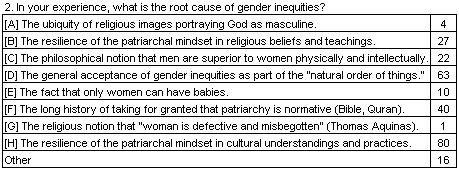 Table 2. AQAL Question 2 and Response Data
Table 2. AQAL Question 2 and Response Data
|
Question 2 is the AQAL upper left quadrant (ULQ) question on gender equality/equity. It is a "multiple choice + other" question. The table shows the question, choices A to H and "other," and choice selection counts.
|
Figure 3 shows two views of the response data:
 Figure 3. Analysis of Question 2 Responses
Figure 3. Analysis of Question 2 Responses
|
The pie chart on the left shows the breakdown of the raw (ungrouped) response data as shown in Table 2. The pie chart on the right shows the pie chart when the data is grouped by choices pertaining to cultural motivations (C, D, E, H, total=175), choices pertaining to religious motivations (A, B, F, G, total=72), and "other" responses (total=16).
|
Since culture influences religion and vice versa, there may be a significant overlap between the two groups. It is interesting to note that 7 out of the 16 "other" answers refer to this mutualism between culture and religion. These are the "other" possible "root causes" entered by participants (the seven responses that bring up mutualism between culture and religion are highlighted in yellow):
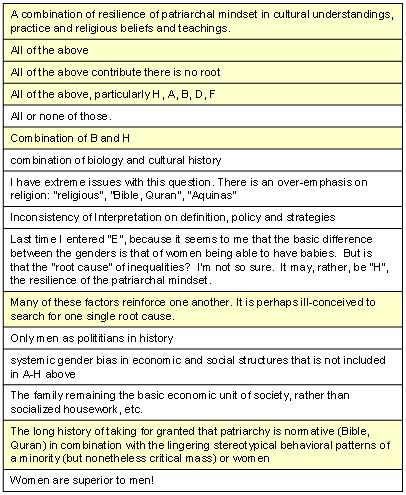 Table 3. AQAL Question 2 and "Other" Response Data
Table 3. AQAL Question 2 and "Other" Response Data
Time and space do not permit to include here an in-depth analysis of each of the 32 AQAL questions. At a high level, the summary report histograms are most informative in terms of isolating issues for ESD by theme. Another interesting analysis slice would be to group the questions by AQAL quadrant and see what the distributions are for each quadrant. This might lead to giving more attention to the individual and cultural forces that must be understood before a reformation of the financial global system, other global systems, and the critical issue of global governance can be accomplished.
Further Analysis and Summary of "Lessons Learned"
Keeping in mind that the evidence is based on a non-scientific sample, and keeping in mind that the first AQAL question for each theme is "multiple choice + one" (participants can select only one answer, so the counts must add up to 263), while the others are "all applicable + other" (participants may select more than one answer, so the counts may add up to more than 263), the following is a summary of "lessons tentatively learned" in Version 1.5:
About the relevance of the UNESCO ESD themes:
- V1.5, like V0 and V1, seems to confirm the high relevance of the eight UNESCO ESD Themes.
- The relevance of the eight themes is solid. But what about completeness? Any themes missing?
About the scope of the UNESCO ESD themes:
- Regarding the ESD theme of gender equality/equity, the most frequently selected issues are: in the upper left quadrant, resilience of the patriarchal mindset in cultural understandings and practices (80); in the upper right quadrant, show the need to better recognize & understand the contributions of women as well as those of men (177); in the lower right quadrant, reformation of secular institutions to achieve full gender equity in positions of authority (190); in the lower left quadrant, recognizing that men and women share the same human rights (207). A more detailed analysis shows that a key issue is the mutual influence between culture and religion. At this point in human history, most religious institutions are still resisting to have women in roles of religious authority, and this reinforces the patriarchal culture in secular institutions as well. Similar inputs from all regions of the world indicate that this is a universal issue. Explicit issues of gender bias in religion are selected a total of 362 times in the four AQAL questions for this theme. Issues where the influence of religion on gender bias is commonly acknowledged are selected 980 times. This includes "other" responses. Some of these are "all that apply + other" questions, so this numbers conflate secular and religious issues. But the evidence points to a significant religious obstacle to making progress toward gender equality/equity.
- Regarding the ESD theme of human health, the most frequently selected issues are: in the upper left quadrant, extreme poverty (malnutrition, unsanitary living conditions, lack of access to free health care services) (102); in the upper right quadrant, promote better education about taking health into account when making individual choices (213); in the lower right quadrant, reformation of health care systems so as to make health care more accessible and affordable (215); in the lower left quadrant, consensus that health care is a human right (224). Actually, these are issues of social and environmental justice, as explicitly stated in a choice that was selected 161 times. The issues of extreme poverty (social injustice) and the negative health impacts of pollution (environmental injustice) are tightly coupled. As Vandana Shiva has pointed out: "natural resources form from the poor to the rich, toxic waste flows from the rich to the poor." The most critical issue is how to reach a consensus that health care is a universal human right. Any health care reform should flow from this basic principle, but in practical terms there is also the issue of how to pay for it. At a time when health care (including the practice of medicine and the need for health insurance) have become a lucrative business, it is clear that any discussion of health care as a human right would require a parallel discussion of health economics.
- Regarding the ESD theme of environmental stewardship, the most frequently selected issues are: in the upper left quadrant, indulging in extravagant consumerism, especially in the First World (132); in the upper right quadrant, work for both social justice and environmental justice (222); in the lower right quadrant, provide incentives to stabilize consumption and stabilize the use of natural resources at sustainable rates (196); in the lower left quadrant, let go of idealistic transformational goals and focus instead on formulating economic and other incentives to "think green, act green" (150). In the "other" responses, the interaction of three individual motivations -- self-indulgence in consumption, financial greed, and sexual pleasure that leads to population growth -- is consistently expressed in one form or another. At a time when people are increasingly becoming aware about environmental management being essential for the survival of humanity, it is good to see a convergence of opinions as to what the top priority issues are. There can be no question that natural resource depletion and environmental deterioration are driven by excessive consumption of non-essentials and careless waste of essentials, the well-known capitalist obsession with short term profits, and exponential population growth. The net result is an exponential growth in consumption per capita, albeit distributed so that the developed nations with the lowest birth rates do most of the consuming, and the developing nations with highest birth rates do most of the hungering. This is the so-called "sustainable development paradox," which must be an crucial ingredient of ESD.
- Regarding the ESD theme of rural development, the most frequently selected issues are: in the upper left quadrant, lack of opportunities for human development (65) and the perception that resources and opportunities are concentrated in the cities (64);
in the upper right quadrant, if you live in a city, promote the allocation of resources to rural areas (151) promote the allocation of resources to research in agricultural and/or forestry best practices (147); in the lower right quadrant, establish checks and balances to ensure a fair distribution of resources between rural and urban areas (184); in the lower left quadrant, rediscover the high value of agriculture and forestry for the good of society (189). Surprisingly, several of the "other" responses questioned the value of rural development. Since by now most people live in cities, why worry about rural development? This is a good example of an issue where numbers must be tempered by judgement. If everyone moves to the cities, where shall the food come from? Will people in the cities be willing to grow their own vegetable gardens and livestock? Indeed, technology has had a significant impact in improving agricultural productivity, albeit with some negative effects such as consumption of fossil fuels and the widespread use of pesticides as well as chemicals to fatten cattle quickly. The motivation is, of course, to shorten the time to market, never mind chemicals getting into the food and water supplies and people getting sick. A more sensible issue worthy of discussion is how to feed humanity without harming humanity and/or the human habitat.
- Regarding the ESD theme of cultural diversity, the most frequently selected issues are: in the upper left quadrant, ignorance that breeds intolerance (80); in the upper right quadrant, promote diversity (including gender balance) in the workplace and other secular institutions (213) and promote diversity (including gender balance) in religious institutions and rituals (134); in the lower right quadrant, increase financial support for gender studies, ethnic studies, and other studies that help young people gain an appreciation for cultural diversity, the positive value of inclusiveness, and the negative value of exclusiveness (178) and withdrawal of subsidies to institutions (both secular and religious) that practice any form of discrimination (172); in the lower left quadrant, increased appreciation for the value of a diverse and multi-cultural community (209). Both in the selected choices, and in the "other" responses, there is convergence on cultural diversity being a positive influence for sustainable development, albeit only to a certain point. The process of globalization is making cultural diversity a reality all over the world. In this sense, globalization and migration and blessings in disguise. But just as too much of a good thing may become bad, so it is with cultural diversity. If a given cultural or religious practice is taken for granted in one country but considered offensive in another, the diversity synergies that add value may not be effective in the latter country. Moslem women wearing the burka in France is a case in point. Imagine American women going shopping in Iran wearing expository attires. Mutual respect must prevail, but mutual respect seldom prevails when it is a matter of morals and human rights. In general, people should adapt to local customs for the sake of peace and collaboration. Public displays that become inflammatory tend to suppress the benefits of cultural diversity. It is not a matter of requiring unity in uniformity. The goal is unity in diversity, but such diversity becomes harmful when it is incompatible with "unity of hearts."
- Regarding the ESD theme of human security, the most frequently selected issues are: in the upper left quadrant, he desire for wealth, power, and honors (151); in the upper right quadrant, work for social and environmental justice (189) and work to close the gap between the very rich and the very poor 164); in the lower right quadrant, educate children on the Declaration of Human Rights, the Earth Charter, and the Hannover Principles (191); in the lower left quadrant, make war and violence "collectively unacceptable" (188) and make the rich-poor gap "collectively unacceptable" (161). The well known saying, "if you want peace, work for justice," encapsulates the essence of peace and justice as engines for sustainable development. This capsule of wisdom could be an appropriate motto for ESD. There can be no sustainable development without peace, and there can be no sustainable development without justice. In other words, peace and justice are necessary conditions for sustainable development. In fact, if peace includes all forms of nonviolence, and if justice includes both social and environmental justice, then peace and justice are also sufficient to fuel sustainable development. In this regard, the following "other" response deserves especial consideration in ESD: "The worst violence comes from religious fanatics. Religions teach peace in theory but in practice stress difference and intolerance. There must be a stronger control over religious groups and better education." After 9/11, it is hard to deny that there must be checks and balances between social and religious institutions, just as there must be checks and balances between global, national, and local levels of governance. In matters of peace and justice, popes and ayatollahs must be accountable to presidents and prime ministers, and vice versa.
- Regarding the ESD theme of sustainable urbanization, the most frequently selected issues are: in the upper left quadrant, uncontrolled growth (115) driven by the attraction of urban jobs, resources, and amenities (75); in the upper right quadrant, support developing massive transit systems to avoid individual commuting (181); in the lower right quadrant, reverse migration from rural to urban areas by making rural living more attractive -- economically and socially (180) and democratically establish effective disincentives to urban sprawl (161); in the lower left quadrant, increased awareness of the need for sustainable consumption by those who live in cities (200), increased collective desire for more green spaces within cities (182), and increased collective awareness about the negative health effects of congestion and pollution (179). The central issue here is that supplying cities with everything from bananas to air conditioners consumes a lot of effort, a lot of time, a lot of energy, and a lot of pain and tears in transportation accidents. The core of the issue is social and cultural. In ESD, sustainable urbanization must be studied and discussed in terms of making cities less dependent on external supply chains and more self-sufficient in terms of basic necessities such as food and water. Grocery stores and tap water need to be replaced by vegetable gardens and rain containers. Dogs and cats must learn to share with pigs and cows. When there is no rain, going to get water at the closest well or hydrant is good exercise. In other words, sustainable urbanization is not primarily a matter of city management; it is, primarily, a matter of city dwellers transitioning to sustainable lifestyles.
- Regarding the ESD theme of sustainable consumption, the most frequently selected issues are: in the upper left quadrant, Consumerism is an escape from looking inside and undertaking the inner journey (65) and lack of appreciation for a simple lifestyle (53); in the upper right quadrant, start by moderating your own consumption habits (227); in the lower right quadrant, establish incentives for shifting to renewable energy sources and disincentives for the consumption of fossil fuels (184), advertise the negative individual, social, and ecological impacts of various forms of excessive consumption (168), formulate economic policies in light of economic and ecological growth limits (167), and undertake a radical rethinking of educational systems (starting with kindergarten) to stress "learning by doing" in addition to "learning by listening" (164); in the lower left quadrant, greater recognition of the value of knowing and practicing the principle of environmental sustainability (208) and general awareness that there are sustainability limits to consumption rates (195). It is very gratifying to see that most participants are ready to face the music, i.e., the age of "unlimited growth" and "extravagant consumption" is coming to a close. In this regard, the global financial and economic crisis currently underway, bad as it is in the short term (especially for the poor), may turn out to be a blessing in disguise for the long term. It is not simply a matter of moderating consumption to prolong the availability of non-renewable resources such as fossil fuels. Not is it simply a matter of reducing material consumption to a rate that is sustainable by not exceeding the recycling capacity of renewable resources. It is a matter of avoiding the collapse of the human habitat by the effects of global warming and the resulting climate changes. And, even more important, it is a matter of moderating material consumption so as to energize human development in all dimensions -- physical, intellectual, psychological, and spiritual.
About the survey design and questionnaire:
- The survey needs further improvement for brevity, bias minimization, and coverage maximization.
- The analysis of the 40 questions in V1.5 was a nightmare. Need to apply the KISS principle.
- A filter such as the Girardian "scapegoat test" is needed for the instrument to become unbiased.
- A checklist of sustainable development issues needs to be collected based on V0, V1, and V1.5
- Current research on the relevance, timeliness, and accuracy of UNESCO ESD themes needs to be collected.
- The relationships between the UNESCO ESD themes and the UN MDGs must be researched.
5. Assessment of V0, V1, and V1.5 Tests
As of 24 April 2009, the V0 survey had been completed by 61 participants. As of 27 May 2009, the V1 survey had been completed by 129 participants. As of 27 June 2009, the V1.5 survey had been completed by 263 participants. So the number of participants keeps doubling:
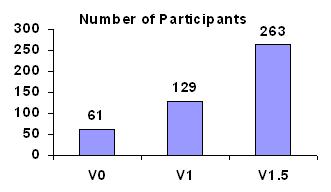 Figure 4. Number of Participants - V0, V1, and V1.5
Figure 4. Number of Participants - V0, V1, and V1.5
But the distribution of participants by role in sustainable development is very similar for V0, V1, and V1.5:
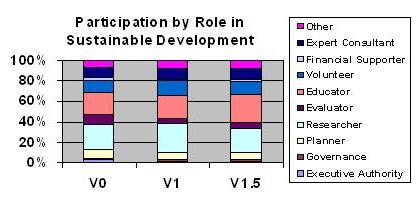 Figure 5. Participation by Role in Sustainable Development - V0, V1, and V1.5
Figure 5. Participation by Role in Sustainable Development - V0, V1, and V1.5
People could select more than one role, so the numbers add up to more than 61 for V0, 129 for V1, and 263 for V1.5, but the distributions are very similar, with most of the participants being researchers and educators. There is a good representation of volunteers and consultants, but very few executives and government officials participating thus far. The combined analysis of V0, V1, and V1.5 responses leads to further refinement of both the underlying Freire-Wilber design and the format and number of questions.
- Freire's method of iterative questions and answers remains as the intrinsic educational philosophy. This means that the iterative succession of questions and answers is always open to adaptation and is never constrained by elitist agendas.
- Wilber's AQAL model is used to improve coverage of all pertinent issues in the consultation questionnaire. This means that the questionnaire must take into account the individual-interior, collective-interior, individual-exterior, and collective-exterior quadrants.
- Within each quadrant of the AQAL model, attention is focused in the eight areas prescribed by UNESCO. This means that there must be at least eight questions for each of the quadrants, one for each of UNESCO's key educational themes.
- In order to abbreviate the survey, the total number of questions has been reduced from 40 to 16. The V1.6 survey retains the all-quadrants coverage. Furthermore, all questions have gone through the filter of an "scapegoating test" to remove bias, based on the "mimetic theory" of René Girard. This is further explained in Section 6.
The following graph shows the relevance rankings of the eight UNESCO ESD themes based on V0, V1, and V1.5 responses:
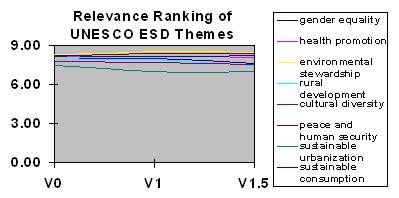 Figure 6. Relevance Rankings of UNESCO ESD Themes - V0, V1, and V1.5
Figure 6. Relevance Rankings of UNESCO ESD Themes - V0, V1, and V1.5
After just three iterations, now totaling 463 responses, the high relevance of the UNESCO ESD themes appears to be robust. The same ranking question for each theme will be included in V1.6 and every subsequent version of the survey. In a rapidly changing world, it is necessary to keep checking the continued relevance of these themes. The rankings of the sustainable urbanization themes appears to be decreasing a bit, but this may be sampling noise. It is anticipated that the relevance rankings of the eight UNESCO ESD themes will show variations from version to version but will remain in the 7 to 9 range. There is, however, no presumption statistical inference validity at any given level of confidence. We are just beginning to "test the waters."
6. A Shorter ESD Test Survey V1.6
Based on feedback from previous versions, brevity appears to be an important determinant of whether or not people take the survey. Therefore, version 1.6 is an attempt to reduce length without compromising the core design of the survey. In version 1.6, there are just two questions for each UNESCO theme, as follows:
- One question to check the relevance of the UNESCO theme -- 8 questions.
- One question to cover all issues that pertain to the theme -- 8 questions
In other words, version 1.6 has 2 questions for each of the 8 UNESCO themes, for a total of 16 questions. The relevance ranking question for each theme is the same as before, with a ranking sacle of 1 to 9, where 1 is "irrelevant" and 9 is "critical." The second question is "multiple choice," with five choices:
- One choice to reflect the individual internal view (left upper quadrant)
- One choice to reflect the individual external view (right upper quadrant)
- One choice to reflect the collective cultural view (left lower quadrant)
- One choice to reflect the collective institutional view (right lower quadrant)
- One choice to be entered by the participant if none of the previous ones is selected
In the continuing process to minimize bias and maximize coverage, this time all the quadrant-related questions are written with a Girardian (mimetic, violence/nonviolence) flavor. This is further explained in Section 7 below. Here we include the new list of 16 questions (collapes from the 40 questions in previous version). Version 1.6 is the version to test for brevity. Hopefully these 16 questions are neutral (unbiased) and stiil provide complete coverage of issues, albeit at a more generic level. More specificity in the answers to be selected may have to be postponed and reconsidered when the survey is tailored for regions, nations, and localities.
Test Survey V1.6
Abbreviated to 16 Questions
In the following questions and answers:
SD = sustainable development
ESD = education for sustainable development
All questions and answers are about "issues/obstacles," not about "solutions"
QUESTIONS ON EDUCATION FOR GENDER EQUALITY/EQUITY
This is Section 1 of the Survey
- How important is gender equality/equity for SD and ESD?
Rank the importance in a 1-9 scale (1 is irrelevant, 9 is critical).
- What is the most difficult obstacle to achieving gender equality/equity?
Select the best answer or enter your own:
- [A] The deep seated secular and/or religious belief that men are superior to women.
- [B] Fear that egalitarian behavior may lead to rejection and ridicule.
- [C] Widespread resistance to overcome traditional gender-based exclusions.
- [D] Cultural prejudice that patriarchy is based on the "natural order of things."
- [E] Other (to be entered by the participant if none of the above is selected).
QUESTIONS ON EDUCATION FOR HEALTH PROMOTION
This is Section 2 of the Survey
- How important is health promotion for SD and ESD?
Rank the importance in a 1-9 scale (1 is irrelevant, 9 is critical).
- What is the most difficult obstacle to promoting human health?
Select the best answer or enter your own:
- [A] For most people, health care becomes a priority only after they get sick.
- [B] Not having enough "doctors and nurses without broders."
- [C] Insufficient institutional awareness that health care is a human right.
- [D] The lack of collective political will to provide universal health care.
- [E] Other (to be entered by the participant if none of the above is selected).
QUESTIONS ON EDUCATION FOR ENVIRONMENTAL STEWARDSHIP
This is Section 3 of the Survey
- How important is environmental stewardship for SD and ESD?
Rank the importance in a 1-9 scale (1 is irrelevant, 9 is critical).
- What is the most difficult obstacle to environmental stewardship?
Select the best answer or enter your own:
- [A] Lack of motivation to balance consumption desires with environmental stewardship.
- [B] Inertia and the lack of financial incentive until people are hit in the pocketbook.
- [C] Institutional negligence in fostering both social justice and environmental justice.
- [D] The culture of consumerism and taking for granted the resilience of the human habitat.
- [E] Other (to be entered by the participant if none of the above is selected).
QUESTIONS ON EDUCATION FOR RURAL DEVELOPMENT
This is Section 4 of the Survey
- How important is rural development for SD and ESD?
Rank the importance in a 1-9 scale (1 is irrelevant, 9 is critical).
- What is the most difficult obstacle to rural development?
Select the best answer or enter your own:
- [A] The lack of motivation and incentives to work the land.
- [B] The common belief that the city is "where the action is."
- [C] The systemic concentration of private and public institutions in cities.
- [D] A general consensus that city dwellers get better education and other services
- [E] Other (to be entered by the participant if none of the above is selected).
QUESTIONS ON EDUCATION ABOUT CULTURAL DIVERSITY
This is Section 5 of the Survey
- How important is cultural diversity for SD and ESD?
Rank the importance in a 1-9 scale (1 is irrelevant, 9 is critical).
- What is the most difficult obstacle to acceptance of cultural diversity?
Select the best answer or enter your own:
- [A] Ignorance that breeds intolerance.
- [B] Seeking human development in isolation from cultural diversity.
- [C] Institutions fostering "unity with uniformity" rather than "unity in diversity."
- [D] Cultural aberrations such as racism, sexism, and many other "isms."
- [E] Other (to be entered by the participant if none of the above is selected)
QUESTIONS ON EDUCATION FOR PEACE AND SECURITY
This is Section 6 of the Survey
- How important are peace and human security for SD and ESD?
Rank the importance in a 1-9 scale (1 is irrelevant, 9 is critical).
- What is the most difficult obstacle to peace and human security?
Select the best answer or enter your own:
- [A] The human propensity to use violence.
- [B] Violence is mimetic, i.e., violence engenders violence.
- [C] The long history of violence by both secular and religious institutions.
- [D] Most cultures fail to recognize the power of nonviolence.
- [E] Other (to be entered by the participant if none of the above is selected)
QUESTIONS ON EDUCATION FOR SUSTAINABLE URBANIZATION
This is Section 7 of the Survey
- How important is sustainable urbanization for SD and ESD?
Rank the importance in a 1-9 scale (1 is irrelevant, 9 is critical).
- What is the most difficult obstacle to sustainable urbanization?
Select the best answer or enter your own:
- [A] The attraction of urban jobs, resources, and amenities.
- [B] The human propensity to tolerate crowding rather than being lonely.
- [C] Systemic inertia in developing alternative mass transit sytems.
- [D] The widespread attachment to the automobile.
- [E] Other (to be entered by the participant if none of the above is selected)
QUESTIONS ON EDUCATION FOR SUSTAINABLE CONSUMPTION
This is Section 8 of the Survey
- How important is sustainable consumption for SD and ESD?
Rank the importance in a 1-9 scale (1 is irrelevant, 9 is critical).
- What is the most difficult obstacle to attain sustainable consumption?
Select the best answer or enter your own:
- [A] Extravagant consumption provides "instant gratification."
- [B] Reluctance to change consumerist lifestyles even if they are unsustainable.
- [C] Widespread institutional idolatry of economic growth and wealth accumulation.
- [D] The culture of "me, myself, and I."
- [E] Other (to be entered by the participant if none of the above is selected)
|
7. Evolution of Test Survey Design
It is important to visualize the evolution of the survey's design during successive iterations. The following images show how the design is evolving in response to feedback received from the participants.
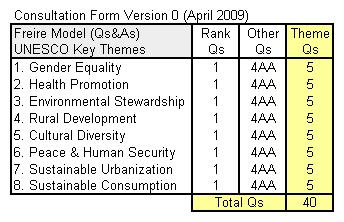 Table 4. ESD Test Survey Design - Version 0
Table 4. ESD Test Survey Design - Version 0
|
Version 0 included five questions for each UNESCO theme: the theme relevance rating question and four additional questions pertaining to the theme. Notation: Qs = Questions, As = Answers, AA = All that Apply.
|
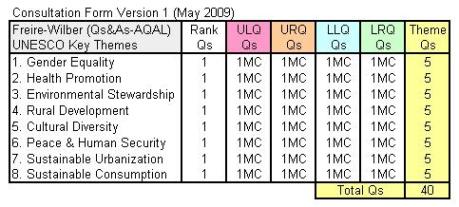 Table 5. ESD Test Survey Design - Version 1
Table 5. ESD Test Survey Design - Version 1
|
Version 1 also included five questions for each area, but the area relevance rating question was followed by four "multiple choice" questions that pertain to the area, one from the perspective of each quadrant. Notation: Qs = Questions, As = Answers, MC = Multiple Choice, AA = All that Apply, MC+ = Multiple Choice + Enter Choice AA+ = All that Apply + Enter Choice, ULQ = Upper Left Quadrant (Individual Conscience), URQ = Upper Right Quadrant (Individual Behavior), LRQ = Lower Right Quadrant (Collective Systems), LLQ = Lower Left Quadrant (Collective Culture).
|
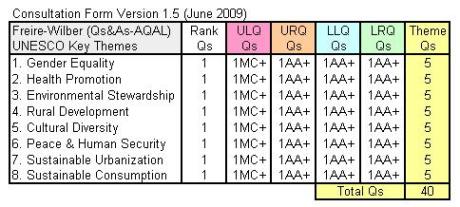 Table 6. ESD Test Survey Design - Version 1.5
Table 6. ESD Test Survey Design - Version 1.5
|
Version 1.5 again includes 5 questions for each UNESCO key area, for a total of 40 questions. In each group of 5, the first question is a "relevance ranking" of the UNESCO key area, where "relevance" means "relevance for sustainable development." The second question requires selecting one root cause from a list but allows the participant to enter another root cause. The format of the third, fourth, and fifth questions is "select all the options that apply and/or enter an additional option." Notation: Qs = Questions, As = Answers, MC = Multiple Choice, AA = All that Apply, MC+ = Multiple Choice + Enter Choice AA+ = All that Apply + Enter Choice, ULQ = Upper Left Quadrant (Individual Conscience), URQ = Upper Right Quadrant (Individual Behavior), LRQ = Lower Right Quadrant (Collective Systems), LLQ = Lower Left Quadrant (Collective Culture).
|
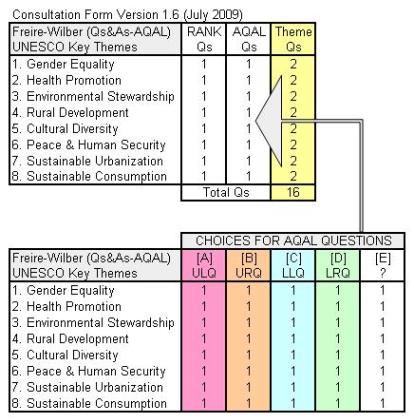 Table 7. ESD Test Survey Design - Version 1.6
Table 7. ESD Test Survey Design - Version 1.6
|
Version 1.6 is in response to the clamor for brevity. It collapses the number of questions from 40 to 16. It includes 2 questions for each UNESCO key area, for a total of 16 questions. In each group of 2, the first question is a "relevance ranking" of the UNESCO theme, where "relevance" means "relevance for sustainable development." The second question is multiple choice, with 5 choices. As indicated by the arrow, for each theme question the first four choices correspond to the four AQAL quadrants, and the fifth choice requires the participant to enter another answer if none of the four initial choices is satisfactory. Notation: Qs = Questions, As = Answers, MC = Multiple Choice, AA = All that Apply, MC+ = Multiple Choice + Enter Choice AA+ = All that Apply + Enter Choice, ULQ = Upper Left Quadrant (Individual Conscience), URQ = Upper Right Quadrant (Individual Behavior), LRQ = Lower Right Quadrant (Collective Systems), LLQ = Lower Left Quadrant (Collective Culture).
|
Version 1.6 is an attempt to retain the integrity of the Freire-Wilber design while reducing bias, increasing coverage, and shortening the survey instrument. In order to collapse the questions in a consistent and unbiased manner, René Girard's mimetic theory is used to test all questions for bias, in particular any form of bias that is "toxic" and may lead to "scapegoating." In mimetic theory, the term "scapegoating" has a precise meaning. It refers to the kind of finger pointing that may lead to violence. More specifically, it refers to the process of resolving vexing issues by making someone who is weak and vulnerable (or some group that is weak and vulnerable) responsible for creating the vexation, and therefore a candidate for punishment as a way of achieving "closure" of the issue and restoring peace to the community.
In a survey, all questions must be stated in a way that avoids "toxic bias" that may lead to "scapegoating." Thus an "scapegoating test" entails examining each question to make sure that there is no explicit or implicit suggestion of scapegoating, let alone violent scapegoating. This is not a mechanical exercise, but one that requires careful semantic analysis and editing of each questions. In doing so, it is assumed that the reader prefers nonviolence, and it is assumed that nonviolence is an essential ingredient for any program of education for sustainable development. The addition of the Girardian ingredient to the design could be visualized as follows:
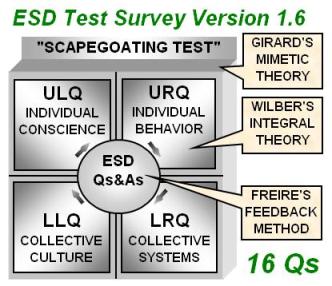 Figure 7. ESD Test Survey Version 1.6 (July 2009)
Figure 7. ESD Test Survey Version 1.6 (July 2009)
|
Version 1.6 is Version 1.5 abbreviated from 40 to 16 questions, and all the questions were carefully edited to eliminate any "scapegoating" form of bias. The circle in the middle represents Freire's recursive Qs & As. The Qs & As cover Wilber's four quadrants recursively, as represented by the arrows around the core circle. Depending on the dynamics of the educational process, at any given time the recursion of Qs and As can be clockwise or counter-clockwise or multi-directional. But, regardless of any other consideration, the Qs & As must always pass the Girardian "scapegoating test" of freedom from bias.
|
A vegetable soup might be a good metaphor for this design. Freire's method of recursive Qs & As is the soup. Wilber's quadrants are the vegetables in the soup. Girard's "scapegoat test" ensures that the vegetables are fresh and free of toxines. To reiterate, Freire's Qs & As ensures that the soup stays warm by the reciprocal feedback between students and teachers. Wilber's quadrants ensures that the soup has been enriched by all kinds of vegetables. Girard's "scapegoat test" ensures that "toxic bias" is minimized. It is hoped that, by adding this additional filter to the design, progress is made toward minimizing bias in the questions and answers. Version 1.6 is the initial step in that direction.
8. Documentation of Test Iterations
The following documentation is available to keep track of the stepwise refinement process:
FIRST ITERATION - VERSION 0 - APRIL 2009
SECOND ITERATION - VERSION 1.0/1.1 - MAY 2009
THIRD ITERATION - VERSION 1.5 - JUNE 2009
FOURTH ITERATION - VERSION 1.6 - JULY 2009
The results of this revised test will be reported in the August issue. The plan is to do stepwise refinement of the consultation form in monthly (quarterly?) iterations. Each iteration will be versioned and analyzed. Each iteration will bring to the surface deficiencies to be fixed and, hopefully, some additional insights. Convergence on a well tested and validated consultation form may take several iterations. Then we can attempt to bring the survey to the attention of a wider audience. Your patience and continued collaboration are respectfully requested. To participate in the version 1.6 test, click on the link below to access the revised consultation form.

ONLINE CONSULTATION FORM V1.6

Remember to click on "submit" at the end so that your answers are recorded. Going forward, the plan is to continue versioning the succession of iterations. Specifically, the survey form (questionnaire), the spreadsheet database, (collected answers), and the summary report (analysis of questions and answers) will be versioned. xxxxx xxxxx xxxxx
9.Suggestions for Prayer, Study, and Action
A Poem for Prayerful Meditation ....
"All things bright and beautiful,
All creatures great and small,
All things wise and wonderful,
The Lord God made them all.
"Each little flower that opens,
Each little bird that sings,
He made their glowing colours,
He made their tiny wings.
"The rich man in his castle,
The poor man at his gate,
God made them,high or lowly,
And ordered their estate.
"The purple-headed mountain,
The river running by,
The sunset,and the morning,
That brightens up the sky;
|
"The cold wind in the winter,
The pleasant summer sun,
The ripe fruits in the garden,
He made them every one.
"The tall trees in the greenwood,
The meadows where we play,
The rushes by the water,
We gather every day;
"He gave us eyes to see them,
And lips that we might tell,
How great is God Almighty,
Who has made all things well."
"All Things Bright and Beautiful"
Cecil Frances Alexander
Ireland, 1823-1895
|
Study the DESD and the MDGs ....
Investigate the points of intersection between the UNESCO themes for the Decade of Education for Sustainable Development (DESD) and the UN Millennium Development Goals (MDGs). In a blank piece of paper, set up a matrix such as the following:
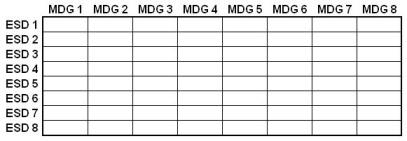
where the ESD rows and the MDG columns are as follows:
ESD 1. Educ for gender equality
ESD 2. Educ for health promotion
ESD 3. Educ for environmental stewardship
ESD 4. Educ for rural development
ESD 5. Educ for cultural diversity
ESD 6. Educ for peace and human security
ESD 7. Educ for sustainable urbanization
ESD 8. Educ for sustainable consumption
|
MDG 1. Eradicate poverty and hunger
MDG 2. Ensure Universal Education
MDG 3. Promote Gender Equality
MDG 4. Reduce Infant Mortality
MDG 5. Improve Maternal Health
MDG 6. Mitigate the HIV/AIDS epidemic
MDG 7. Ensure environmental sustainability
MDG 8. A global partnership for development
|
Place an "X" in the cells where the ESD row and the MDG column are tightly coupled. Are there any points of intersection between ESD themes and the MDGs? Do you have an "X" in all the cells? So what are the ESDs and the MDGs? Same dog with a different collar?
|
Action .... can you spare 30 minutes?
|
| |
Take time to participate in the
Consultation on Education for Sustainable Development
This is the link:
Consultation Form Version 1.6
Version 1.6 has only 16 questions!
|
|Back to SUMMARY|
|Back to OUTLINE|
|Back to SECTION 1|
|Back to SECTION 2|
|Back to SECTION 3|
|Back to SECTION 4|
|Back to SECTION 5|
|Back to SECTION 6|
|Back to SECTION 7|
|Back to SECTION 8|
|Back to SECTION 9|
| Link to Page 2 |
| Link to Page 3 |
|Link to the Home Page|
FUTURES RESEARCH METHODOLOGY
The Millennium Project has announced the publication of Futures Research Methodology Version 3.0 (FRM-V3), edited by Jerome C. Glenn and Theodore J. Gordon. It is the largest, most comprehensive collection of internationally peer-reviewed methods and tools to explore future possibilities ever assembled in one resource. FRM-V3 contains 39 chapters totaling about 1,300 pages.
COVER & LIST OF CONTENTS
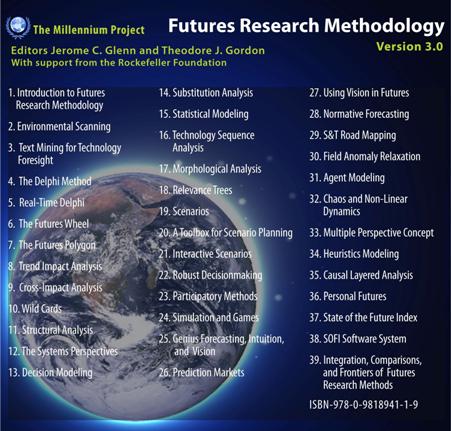
For more information, visit the FRM-V3 Home Page.
BACKGROUND
The Millennium Project is a global participatory futures research think tank of futurists, scholars, business planners, and policy makers who work for international organizations, governments, corporations, NGOs, and universities. The Millennium Project manages a coherent and cumulative process that collects and assesses judgments from its several hundred participants to produce the annual
"State of the Future", "Futures Research Methodology" series, and special studies such as the State of the Future Index, Future Scenarios for Africa, Lessons of History, Environmental Security, Applications of Futures Research to Policy, and a 700+ annotated scenarios bibliography.
INTERNATIONAL ECUMENICAL PEACE CONVOCATION

Kingston, Jamaica, will be the host city for the International Ecumenical Peace Convocation in May 2011. The convocation is sponsored by the World Council of Churches (WCC) and will meet under the theme "Glory to God and peace on earth". It will be the culmination of the WCC's Decade to Overcome Violence (DOV), which has sought to network and bring attention to the peacemaking initiatives of its various member churches. For more information, see the convocation announcement.
|
|
|
Sign of the Times
Gender Equity

Source: Wikipedia
Gender equity is a "sign of the times." Gender inequities are universally rooted in the utter misconception (the so-called "phallic syndrome") that men are superior to women, and lead to incalculable forms of physical and psychological gender violence. It follows, that gender inequities constitute a huge obstacle to human solidarity and sustainable development. It is imperative to overcome, sooner rather than later, gender inequities in both secular and religious institutions, because human development stagnates in the absence of gender balance, and this cannot possibly be what God desires.
Unity in Diversity
Unity in diversity enriches both the individual and the community, and so does diversity in unity. Unity in uniformity enriches neither the individual nor the community, and forced uniformity never leads to unity of hearts. In fact, forced uniformity leads to a fossilization of human relations that eventually corrupts unity and brings about tensions and even violence. For neither individuals nor communities can stay healthy (let alone happy) when confined to any form of straitjacket. Both human development and community development wither when constrained by forced uniformities. It follows that unity in uniformity makes sustainable development impossible. But sustainable development flourishes when unity and diversity enhance each other, thus enabling humanity to forge ahead along the path of peace and justice.
Visualization:
Peoples of the World
Announcements
UNEP TUNZA CONFERENCE
Tunza International Children’s Conference on the Environment, Daejeon, Korea, 17-21 August 2009. For more details visit the Tunza web site or contact the Tunza staff.
PSYCHOLOGY & RELIGION
International Association for the Psychology of Religion (IAPR 2009), Vienna, Austria, 23 to 27 August 2009. Local organizing committee: Susanne Heine and Herman Westerink, University of Vienna.
PRO-ENVIRONMENTAL BEHAVIOR
Royal Geographic Society, 26-28 August 2009, Manchester University, UK. Website: AC2009. Abstracts: Louise Reid and Tom Hargreaves.
FEMINIST ETHICS & SOCIAL THEORY
The Association for Feminist Ethics And Social Theory (FEAST), 24-27 September 2009, Clear Water Beach, Florida. Panels on "Environmental Feminism" and "Evolutionary Psychology." Questions may be directed to Lisa Schwartzman.
WORLD POPULATION
The International Union for the Scientific Study of Population (IUSSP), 27 September - 2 October 2009, Marrakech, Morocco. For more information, visit the conference website and contact marrakech2009.
ISLAMIC THOUGHT
International Seminar on Islamic Thought, National University of Malaysia, Bangi, Selangor, Malaysia, 6-7 October 2009. For more info visit the conference website.
WOMEN, LEADERSHIP & MOSQUES
CFP: Women, Leadership and Mosques: Changes in Contemporary Islamic Authority. Oxford University, 16-17 October 2009. Please send proposals to Hilary Kalmbach.
KNOWLEDGE ECONOMY
International Conference on Knowledge Economy, South Africa, October 20 - 22nd.
See the conference website. The point of contact is Carmen Fitz-Gerald.
SOCIAL RIGHTS
International Symposium on Social Rights, 22-23 October 2009, Akdeniz University, Antalaya, Turkey. For more information, please visit the conference website . The main point of contact is sosyalhaklar. Additional contacts are Prof. Nergis Mütevellioglu, Assist. Prof. Hale Balseven, Research Assist. Mehmet Zanbak.
SCIENTIFIC STUDY OF RELIGION
Discoveries in the Scientific Study of Religion, Denver, 23-25 October 2009. Visit the SSSR2009 conference website. Point of contact: Kraig Beyerlein, Program Chair.
AFRICA GIS
International Conference Africa GIS2009, 26– 29 October 2009, Kampala, Uganda. For more information, please visit the AFRICAGIS2009 web site and contact AfricaGIS 2009.
CLIMATE CHANGE
The world's climate neutral Scientific Climate Conference, 2-6 November 2009 online. Organized by the Hamburg University of Applied Sciences. For more information, visit the CLIMATE 2009 conference website and contact the conference staff at CLIMATE 2009. Note: the website already includes a listing of climate studies available at the Climate Change Studies Library (CCSL).
STATE OF THE WORLD CONFERENCE 2009
November 12-14, 2009, Washington DC. Sponsored by the Integral Institute (Ken Wilber et al). The theme is: "Mobilizing to Save Civilization: A Ten Year Plan to Address Climate Change." From the conference web site: "It is to bring attention to the critical issue of climate change and to catalyze a ten year plan to green our economies that the State of the World Forum is convening a three day conference November 12-14, 2009 in Washington D.C. The 2009 Forum will launch a ten year campaign that will meet in a different world city each year." Current point of contact: DC Hilton Hotel, Washington DC, USA, 1-202-483-3000.
Other contacts will be posted as they become available.
BEHAVIOR, ENERGY &
CLIMATE CHANGE
The 2009 BECC Conference is the 3rd annual conference focused on accelerating our transition to an energy-efficient and low carbon economy through an improved understanding and application of social & behavioral mechanisms of change. Sponsored by the American Council for an Energy-Efficient Economy (ACEEE). When: November 15-18th, 2009. Where: Washington DC. For more details visit the BECC 2009 Conference web site or contact the BECC 2009 Conference Chair.
EARTH SYSTEM GOVERNANCE
"Earth System Governance: People, Places, and the Planet." 2009 Amsterdam Conference on the Human Dimensions of Global Environmental Change. Amsterdam, 2-4 December 2009. Launch event of the Earth System Governance Project, a new ten-year research programme under the auspices of the International Human Dimensions Programme on Global Environmental Change (IHDP). For more information, visit the conference website or contact Frank Biermann.
PARLIAMENT OF THE
WORLD'S RELIGIONS
Parliament of the World's Religions, 3-9 December 2009, Melbourne, Australia. Key topics: Healing the Earth with Care and Concern, Reconciling with Indigenous Peoples, Overcoming Poverty in a Patriarchal World, Securing Food and Water for all People, Building Peace in the Pursuit of Justice, Creating Social Cohesion in Village and City, Sharing Wisdom in the Search for Inner Peace. For more info: PWR2009.
NEW GREEN ECONOMY
The National Council for Science and the Environment (NCSE) is pleased to request your participation at the 10th National Conference for Science, Policy and the Environment: The New Green Economy: Aligning Science, Education, Markets and Systems for Sustainability to be held January 20-22, 2010 at the Ronald Reagan Building and International Trade Center in Washington, DC. Please plan to join NCSE in a large interactive conference to develop and advance science-based solutions for the creation of a “green print” to achieve a sustainable, new green economy. See the conference website. Questions? Contact the NCSE Green Economy Conference
ENERGY TRANSITIONS
Energy transitions in an interdependent world. Sponsored by the Science & Technology Policy Research Group, University of Sussex. The conference will be held at the University of Sussex, near Brighton, on the 25th and 26th February 2010. Further details including the full conference call and application guidelines are available from the conference website. Point of contact: Lee Stapleton.
APPLIED ENERGY
International Conference on Applied Energy (ICAE2010). Sponsored by the University of Singapore. Theme: "Energy Solutions for a Sustainable World." 21-23 April 2010, Singapore. Call for papers and other conference information: ICAE 2010 Web Site. Point of contact: ICAE 2010.
ENERGY EFFICIENCY
Conference sponsored by the International Energy Agency (IEA) and the International Energy Program Evaluation Conference (IEPEC). Paris, France, 8-10 June 2010. Theme: "Counting on Energy Efficiency-It's Why Evaluation Matters!" Web sites: IEPEC 2009 and IEPEC-IEA 2010. Email: Cara Lee Mahany Braithwait.
SUSTAINABLE DEVELOPMENT IN FOOD & AGRICULTURE
International Symposium: Innovation and Sustainable Development in Food & Agriculture (June 28-July 1, 2010, Montpellier, France). Theme: "Facing the crisis and growing uncertainties, can science and societies reinvent agricultural and food systems to achieve sustainability?" Sponsored by CIRAD. For more information: ISDA 2010 Web Site. Email: ISDA 2010.
SOCIOLOGY CONGRESS
International Sociological Association (ISA) World Congress of Sociology, 11-17 July 2010, Gothenburg, Sweden. Session on "Peace, Conflict, and Climate Change" currently scheduled for Wednesday 14 July 2010. See the conference web site for more details or contact the conference chair, Hans Joas, Universität Erfurt, Germany.
RELIGION: A HUMAN PHENOMENON
International Association for the History of Religions (IAHR), 15-21 August 2010, Toronto, Canada. Visit the conference website. The conference director is Professor Donald Wiebe.
STUDY OF THE COMMONS
The International Association for the Study of the Commons (IASC) is accepting for hosting the 13th Biennial Conference, Summer or Autumn 2010. For more information contact Jim Robson and visit the IASCP website.
PEACE CONVOCATION
The International Ecumenical Peace Convocation (IEPC) will be the Harvest Festival of the Decade to Overcome Violence and at the same time a planting season for fresh initiatives. May 2011, Kingston, Jamaica. Sponsored by the World Council of Churches (WCC). Visit the IEPC web site, which provides points of contact worldwide.
CALL FOR PAPERS
SUSTAINABILITY SCIENCE
Proceedings of the National Academy of Sciences of the United States of America (PNAS). PNAS has launched a new section of the journal dedicated to sustainability science, an emerging field of research dealing with the interactions between natural and social systems, and with how those interactions affect the challenge of sustainability: meeting the needs of present and future generations while substantially reducing poverty and conserving the planet’s life support systems. PNAS seeks original research contributions for this new section on both the fundamental character of interactions among humans, their technologies, and the environment, and on the use of such knowledge to advance sustainability goals relevant to water, food, energy, health, habitation, mobility, and ecosystem services. PNAS welcomes outstanding sustainability science papers addressing spatial scales from the global to the local and drawing on a wide range of disciplinary and multidisciplinary approaches. For more information, please contact Josiah Armour.
CALL FOR PAPERS
RELIGION & SPIRITUALITY
This issue of Feminist Review, edited by Lyn Thomas and Avtar Brah, will explore a range of religious and spiritual practices through the lens of gender, and will encompass both theoretical and empirical approaches. We hope to engage with feminism’s long history of critique of the patriarchal nature of world religions such as Christianity, Judaism and Islam, and more recent problematisations of these approaches in light of feminism’s relationship to the Enlightenment and to colonialism. Recent work on the gendering of secularisation theories and on women’s practice of faith and spirituality has complicated and nuanced feminist approaches to religion; this issue will address these questions, while attempting to broaden the debate beyond the binary oppositions and alignments of religion (and most notably Islam) with tradition and ‘backwardness’, and of feminisms with modernity and secularism. Submissions for the issue are welcomed from now until February 28th, 2010. Point of contact: Dr Lyn Thomas.
MUST READ
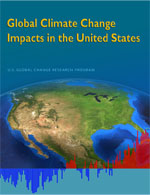
Global Climate Change
Impacts in the United States
US Global Change
Research Program
Washington DC
June 2009
Call for Papers
|
Both subscribers and nonsubscribers are cordially invited to submit a paper to be considered for publication in the PelicanWeb Journal of Sustainable Development as an "invited paper." It should be related to the journal's theme about solidarity, sustainability, and nonviolence as the three pillars of sustainable development. In particular, the current focus is on education for sustainable development. Some suggested themes:
Successful initiatives to foster solidarity, sustainability, and nonviolence
Gender equality as a positive factor for sustainable development
Removal of obstacles for progress toward any or all the UN MDGs
Management of technologies for social and environmental justice
How to foster human development via spirituality and the inner journey
How to foster human and social development via acts of solidarity
How to improve systems of governance via checks and balances
How to evolve collectively toward a culture of sustainability
Invited papers will be published in a separate web page. If you have friends who could submit a good paper, please invite them to do so.
Please email your papers to the Editor.
| |
SUBSCRIBE
|
|